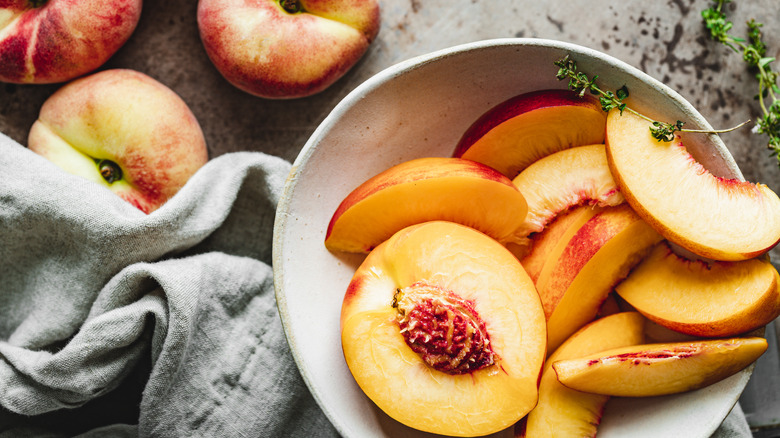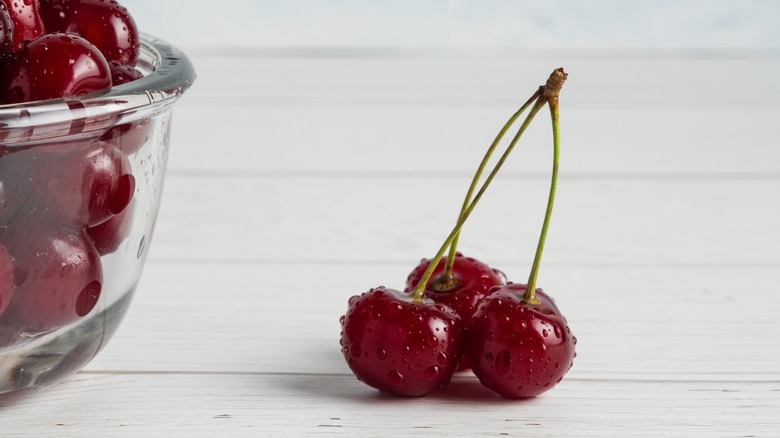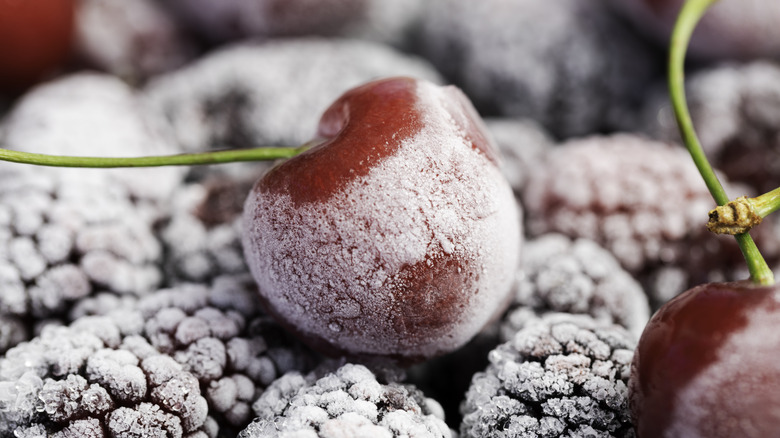Why You Should Think Twice Before Refrigerating Stone Fruit
Stone fruits offer some of the most distinctive flavors in the kitchen. Best known for the succulent flesh that surrounds their rock-solid pit, some of the best known drupes include seasonal favorites such as apricots, cherries, and plums. However, because these fruits are usually harvested when they're ripe, making them last in the kitchen doesn't just boil down to choosing the tastiest peach at the grocery store. And, while a cool environment might seem like the most logical place to preserve their freshness, your fridge might actually be ruining your stone fruit's texture and taste.
Much like tomatoes, studies have shown that stone fruits are prone to low temperature disorders — a term scientists use to describe both internal and external injuries that produce goes through when exposed to cool temperatures. In stone fruits, some of the symptoms of freezing injury include a mealy texture, loss of juiciness or flavor, and internal browning. Most professional cooks opt to leave their stone fruits out of the fridge for this reason.
A bowl on the counter works wonders for stone fruits
Rather than relying on the fridge to preserve stone fruits, they are best stored in breathable containers at room temperature, where they have the opportunity to get juicy and soften up. Therefore, these treats are best left on the counter or in a bowl, where they can be inspected easily for ripeness. In fact, you can strategically use a bowl of peaches, plums, or your choice of stone fruit as multipurpose decoration. The only exception to this rule is cherries, which can be stored in cooler temperatures so long as they're unwashed and placed in a bag that allows air to circulate.
Still, life happens, and it's not always possible to eat stone fruit within its already short shelf life when it's stored on the counter. Luckily, symptoms of low temperature disorders in produce can take days to develop, which allows for some flexibility when it comes to putting your favorite pitted treats in the fridge if you must. However, unwanted changes in texture and flavor can still happen regardless of ripeness, so plan to keep your stone fruit in the fridge for only a few days at best — and only if leaving them on the counter for any longer would result in rot.
Freeze ripe stone fruits to minimize flavor loss
Interestingly enough, stone fruits rarely experience chilling injuries when stored under 36 degrees Fahrenheit. This makes peaches and cherries some of the best frozen fruits to stock up on because the frigid temperatures will not ruin their texture or ripe flavor. Just choose the most efficient way to cut your stone fruit, place them in a sealable bag or container, and store them in the freezer. Better yet, these items are commonly prepackaged and sold in most supermarkets, making it even easier to enjoy them.
Just keep in mind that thawing frozen fruit usually results in mushy results, as the formation of ice crystals during the freezing process destroys the cell walls of a plant. This isn't a problem when making smoothies or cobbler, as soft and tender textures are more than expected. But, if your goal is to extend the lifespan of your fresh stone fruits, skip on freezing entirely and try to enjoy these juicy treats sooner rather than later.



